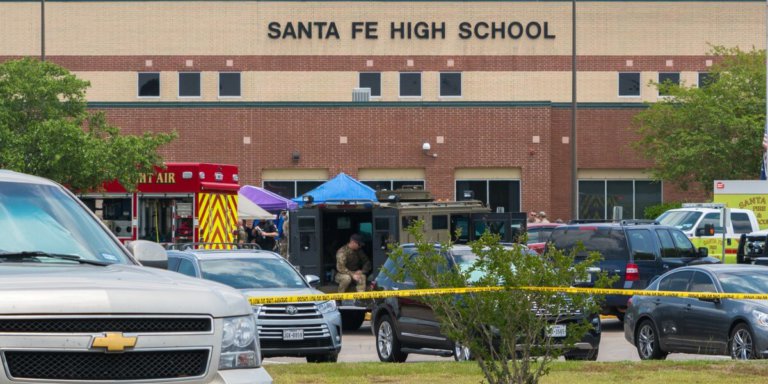
School shootings continue to recur in the US.
According to CNN, there have been 45 school shootings from January to November this year, which is close to an average of one school shooting per week. Out of these incidents, 32 of them happened in kindergarten through to 12th-grade school facilities, across the country from California to New Jersey.
In the past 10 years, there have been 180 school shootings altogether and the number of cases is increasing.
With seemingly no progress from the gun control debate, schools are taking matters into their own hands.
It’s tragic to think that young children are being warned of shootings and guided on how to protect themselves and others during such a crisis, but such is the situation in K12 schools across America.
Here’s how these schools have changed in the past decade or so.
Stop the Bleed Kits
My students spent the day in middle school & visited the 🍎 clinic. Nurse Alice @gboymom is on duty. Alice discussed her role & her ready supplies—
Stop 🛑 the Bleed kit👇Her presence is invaluable. My students were enlightened #SchoolNursesRock ✊ #Vigilance #NoMoreEmptyDesks pic.twitter.com/Ab0SBhpn74— Kendrea Todt (@kltodt) December 5, 2019
More schools are bringing in Stop the Bleed kits, which were developed following the 2012 Sandy Hook Elementary School shooting.
The kits include tourniquets, compression bandages and blood-clotting hemostatic gauze to prevent excessive blood loss. States such as Georgia, Texas, Arkansas and Indiana have equipped schools with these kits.
In a Stop the Bleed campaign launched by the American College of Surgeons, kits were distributed and training was given in an effort to teach more people how to stop bleeding in cases of emergency.
These bleeding control kits are also useful in other incidents that happen on school grounds, such as bad falls on the playground and freak accidents.
Bullet-proof backpacks
Along with books, binders, and pens – bullet-proof backpacks are becoming a more common item on the list of school supplies for K12 students.
There are a number of companies that manufacture them, such as ProShield Scout and Bullet Blocker.
While these soft armours can help protect against stray bullets, former New York Police Department Commissioner William Bratton told CNBC that he would warn parents that these backpacks might not be particularly effective against firearms.
He said, “These backpacks would not, under any circumstances stand up against the assault rifles so often used in school shootings.”
There are also concerns by parents that these backpacks won’t really help students if there is an active shooting situation while they’re in class, as most schools require students to keep their backpacks in their lockers.
These bags appear to offer a false sense of security, more than proven protection. This, however, doesn’t stop parents from purchasing them for their kids and it’s becoming a common item in supply stores like OfficeMax and Home Depot.
Shooting drills
150 recruits from the Chicago Police Academy are acting as students for an active shooting drill at Whitney Young HS.
The drill will take 2-3 hours and include between 500-600 people.
Half of the school’s faculty and staff voluntarily chose to participate. @cbschicago pic.twitter.com/cuQmjG9xYI
— Audrina Bigos (@AudrinaBigos) April 26, 2018
Besides products and bleeding control kits, schools in the US also hold active shooting drills to teach students what to do if there is a shooting situation and prepare them for the worst-case scenario.
These shooting drills have not only become more prevalent but also more realistic with “simulated gunfire” and rubber bullets being used in some cases.
According to NPR, some experts and parents are worried that these active shooting drills are causing more harm than good, even triggering psychological trauma for some individuals.
Melissa Reeves, a professor at Winthrop University and former president of the National Association of School Psychologists, told NPR, ” What we can do is we can prepare our students and our staff members through lockdown procedures.
“And that is where you get behind a locked door, if possible, out of the line of sight. But we can do that in a way for which, first of all, we talk them through what it means to go into lockdown and where should we be positioned in that room. And then we can practice that in a very calm manner.”
Liked this? Then you’ll love…
Trump suggests arming teachers with guns to stop school shootings
US: Recognizing mental health problems could help prevent school shootings – schools chief







